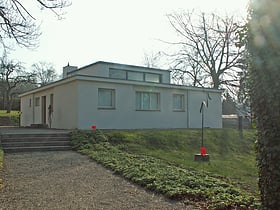Weimar: History Museum
Places and attractions in the History museum category
Schloss Belvedere
Baroque palace and large landscaped park Nestled in the charming city of Weimar, Schloss Belvedere is a baroque masterpiece that beckons visitors with its historical elegance and architectural grandeur. This castle, situated just a few kilometers outside the city center, offers a glimpse into the opulent past...
Stadtschloss
The Stadtschloss Weimar, nestled in the heart of the culturally rich city of Weimar, Germany, is a historical castle that offers visitors a journey through time. This grand structure, which has been a pivotal part of Weimar's landscape, dates back to the early 16th...
Goethes Gartenhaus
Goethe's Garden House in the Park an der Ilm zu Weimar was a place of residence and work of Johann Wolfgang von Goethe. It has been a UNESCO World Heritage Site since 1998 as part of the "Classical Weimar" ensemble.
Schloß Tiefurt
Nestled in the cultural city of Weimar, Germany, Schloß Tiefurt, also known as Tiefurt House, is a charming historical site that offers a glimpse into the rich heritage of the region. This elegant manor house, surrounded by an idyllic park, was once a summer residence...
Goethe House
The Goethe House is the main house lived in by the writer, poet, and statesman Johann Wolfgang von Goethe whilst in Weimar, Germany, though he did live in several others in the town. The home serves as the main location of the Goethe-Nationalmuseum.
Goethe-Nationalmuseum
The Goethe-Nationalmuseum is a museum devoted to the German author Johann Wolfgang von Goethe, in the town of Weimar in Germany.
Haus am Horn
UNESCO-listed Bauhaus building The Haus am Horn is a domestic house in Weimar, Germany, designed by Georg Muche. It was built for the Bauhaus Werkschau exhibition which ran from July to September 1923.
Gedenkstätte Buchenwald
Nazi and Soviet concentration camp site Buchenwald was a Nazi concentration camp established on Ettersberg hill near Weimar, Germany, in July 1937. It was one of the first and the largest of the concentration camps within Germany's 1937 borders.
Museum für Ur-und Frühgeschichte
The Museum of Prehistory and Early History of Thuringia in Weimar combines a museum with a 1000 m² exhibition area and the Thuringian State Office for the Preservation of Monuments and Archaeology under one roof, which is the sponsor of the museum.
Map









